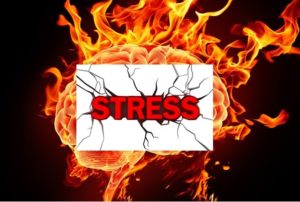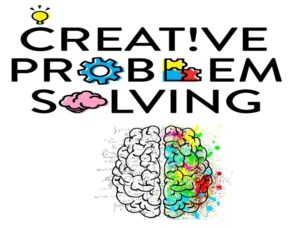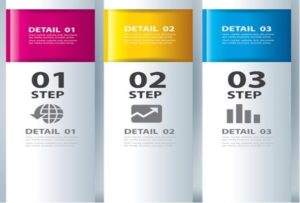Making Choices: Raising Confidence through Decision-Making Techniques
Life is a sum of all your choices
—Albert Camus
Albert Einstein pointed out that problems cannot be solved with the same thinking used to create them, a relevant observation in world where, every day, we attempt to make better decisions in an effort to make our lives easier. Each problem we face is comprised of facts as well as assumptions, the latter of which are based on perceptions and represent detours from true statements, which are based on logical reasoning. When we are determined to challenge existing assumptions, accurately evaluate obstacles, and resolve issues in a timely matter, we afford ourselves a better understanding of our problems and solutions.
The process of learning how to make choices, critical for human development, is evident from the point when a young child learns to select the more attractive of two toys. In making choices, children are less biased than adults. Relying on their own reflections rather than expectations and experience-based wisdom, children explore evidence without hesitating, without doubting their beliefs. Because children tend to perceive tasks as play or at least personally relevant events, they become fascinated, not frustrated, by dilemmas. Observations scaffold their natural abilities to consider a wider range of possibilities. They usually have neither biases nor fixation based on previous results, and therefore they initiate their journey enjoying the process no less than the outcome.
The choices we make in adulthood, on the other hand, are more results-oriented and define our very quality of life. The ease with which we make these decisions is affected by, among other factors, stress. Most of us get frustrated any time we lose control over virtually any situation. However, the impact of stress on decision-making is not as obvious as it may at first appear.
While it’s true that a stressful situation may negatively affect our ability to make the right choice, it may also force us to focus on a problem and pay closer attention to details and results. The magnitude of stress at any given time depends on both conditional factors (over-scheduling, demands, etc.) and, more importantly, personal perception. While our own high expectations and judgement can damage our self-esteem and thereby our ability to perform, we can turn the tables by trying to frame problems as tasks rather than barriers, and any disappointments as steps toward improvement rather than losses.
When stress becomes a continuous presence, it may promote anxiety, compulsiveness, or even depression. It prompts the hypothalamus to release chemicals, or hormones, that let the brain and body respond to that stress. This can result in an individual withdrawing by shutting down and avoiding social contact. Because it activates a flight-or-fight response—which is useful in the face of real danger but not as response to continuous stress—it can lead to aggressive behavior. Unmanaged stress can also negatively influence emotional and intellectual capacity, leaving those traumatized by previous experience in a sort of survival mode in which they’re oversensitive to current triggers. It is very difficult, naturally, to make effective decisions in such a state. Fortunately, there are effective techniques to soothe the mind and minimize negative reactions to a stress.

We can deal with stress through consciously breathing, walking, and simply acknowledging the body-mind reaction to stress. If we hope to solve problems efficiently in stressful situations, we must accept ourselves, focusing on our future even as we embrace the past. Specifically, we should clearly define obstacles, hone in on the critical issues, and filter out irrelevant factors. Furthermore, when we make a habit out of positive self-talk and reaching out as needed to supportive individuals, we build up our capacities, simultaneously, for processing emotions, proactive thinking, and effective decision-making.
Looking in greater depth at the stress-combating technique of positive thinking, we can see that its uplifting affirmations work through increasing passion as well as drive to succeed. Thoughts of positive possible outcomes should be combined with reasonable ambitions to prevent wishful thinking and enable us to realize true obstacles to our goals. Additionally, we can minimize the anxiety associated with a certain task when we clearly define the existing challenges, goals, and obstacles to accomplishing it. If, on the other hand, we allow ourselves to steep in chronic denial or ignorance of the problem, or to approach it from an overly judgmental mindset, we poison our decision-making abilities.
While it can be tempting to avoid a problem that looms large, it is only when we think specifically and form a realistic plan of action that we can gain a better conceptual understanding of the problem, along with a clearer view of logical solutions to it; several basic types of reasoning can assist us in this endeavor. Quantitative reasoning—based on scientific methods, logical arguments, and critical thinking—is known to upturn productive choices. Another type of helpful reasoning, deductive, entails moving from a general rule to a specific issue and can involve organizing information into tables, charts, and diagrams to solve problem more systematically. Deductive reasoning is based on the process of drawing a logical result from the aligned true premises. This variety of reasoning follows a logic pattern such as: A = B and B = C, then A = C. For example, since stimulating the brain’s aggression center increases the production of stress hormones and stress hormones increase the level of aggression, stimulating the brain’s aggression center increases the level of aggression. Conclusions reached via deductive reasoning should be carefully evaluated to ensure they are both sound and valuable. In some cases, an argument can be valid while being unsound. Therefore, it is essential not to generalize the statement even in cases when all premises are true.
Elaborating on individual cases to create a general assumption is inductive reasoning. Inductive thinking represents multiple premises to support evidence and confirm the conclusion. Inductive reasoning refers to a drawing a broader generalization from specific information, establishing the probability of its conclusion. For example, after the creativity training, the participant Mr. S. demonstrated a higher level of originality. After the creativity training, another participant, Ms. D., displayed a higher level of originality. Therefore, one assumes that after the creativity training, all participants demonstrated an increased level of originality.
Problem solving is a complex process that requires declarative as well as procedural knowledge. The first of these types—declarative knowledge—can be verbalized and conveys the nature of things along with explanations of relationships. Procedural knowledge pertains to how to do certain things and is usually acquired by trial-and-error. It consists of skills, concepts, rules, and strategies. Both declarative knowledge (facts, concepts, and principles) and procedural knowledge (problem-solving behavior) are essential for completing two of the main tasks involved in problem solving: creating a healthy argument and implementing solutions.

Methods of problem solving—which can otherwise be thought of as processes for moving from a giving condition to desired state—include but are not limited to brainstorming, analogical thinking, abstraction, and hypothesis testing. People find different approaches, and different steps within the overall decision-making process, easier than others. Some people are able to assess a matter but have difficulty executing a decision. Other people easily make decisions and act upon their evaluations. Some individuals find multitasking, or solving multiple problems at once, rewarding while others prefer to work through one obstacle at the time. Some problems are best solved in a group setting, and one of the most effective tools for this is brainstorming—a technique based on finding the best solution by collecting multiple ideas instinctively from the group of individuals to suit a given purpose. Whatever your particular strengths and preferences, you can always improve your decision-making skills by working on the abilities to identify options and make clear judgement.
The process of gathering all the facts and selecting the best options should be supplemented by considering advantages and disadvantages. The ability to make sound choices counts on staying firm in your thoughts and avoiding vague statements along with flexibility and open-mindedness. When making a complex decision, it is important to not only identify all possible options but also underline implications for every option, then evaluating and reflecting upon all of those factors as well. The process of evaluating the options enables one to consider unseen opportunities and a broader range of alternatives, changing the priorities based on the new information. Additional justification and brainstorming method can be used to avoid the impact of personal biases and attitudes on an argument.
Defining a problem is a major part of decision-making. In fact, Einstein once said that if he had one hour to save the world, he would spend fifty-five minutes defining the problem and only five minutes finding the solution. An inaccurately defined or ill-defined problem cannot be solved properly because there are no concrete goals or plans of actions for your higher-order cognitive thinking to engage in. When defining a problem, it is important to focus on root causes rather than symptoms. The root cause of a problem is an important component in understanding the matter. It refers to the deeper cause in the chain of if causality; when we definite it, we are able to identify the origins of a problem, leading to more comprehensive decision-making.
Once the root cause has been clearly identified, the desired outcome should be clarified and written down. The current state should be defined. The gap between the current and desired states should be carefully analyzed. From that point, a plan of action can be formulated to fill the gap via logical steps toward the desired outcome. Considering alternative steps may increase the quality of the final decision. Even alternatives that don’t contribute toward the best solution may trigger some interesting ideas and lead toward an invention. Analyses of the current state against of expectations can be enhanced through the collection of feedback.
When it comes to finding and shaping the problem, we are best served by focusing on the target and finding missing conditions. Complex problems—which may involve multiple goals and uncertainty—are more difficult to define and understand. Solving these problems requires systematically breaking down the larger issue into simpler, solvable problems. When we’ve identified these smaller problems, we need to create a step-by-step action plan leading toward the goal.

It is important to acknowledge all barriers to making the best possible decision. Our unacknowledged biases and fixations can, unwittingly, lead to corrupted decisions. Favoring a previously approved decision, which may be inappropriate to current circumstances, may also distort decision-making. Furthermore, emotional involvement can interfere with concentration on the real problem; therefore, lack of emotional control may result in poor reasoning.
There other techniques to make a decision-making process easier, such as taking a problem apart and analyzing its smaller parts across various domains. Searching for existing information and ideas, analyzing and choosing approved solutions in identical situations, and conducting extensive research on a problem are valuable tools to succeed in making choices. Reshaping the problem and turning it into a different configuration, which has an effective solution, is another technique. This can be accomplished by re-framing the problem in light of a broader domain, conducting new research or a more in-depth evaluation, or cultivating a different perspective.
Sometimes it is effective to test random solutions in a trial-and-error approach until the right decision is reached. Good decision-making requires creative tools such as inducing novel perspectives, identifying associations, creating random ideas, or re-framing the problem. We can shift our mental state using these techniques, thus turning decision-making into a more original process. Creating multiple ideas and randomly selecting some of them may lead to unexpected solutions. In addition, highlighting irrelevant or independent dimensions of a problem may help us identify hidden challenges, which in turn can result in a complex deduction.
When a solution cannot be approached directly, we can take an indirect approach using lateral or creative thinking. Essentially, this means that if a certain problem cannot be solved with everyday life experience and knowledge, we can search for and apply analogies. Transferring a given problem into another matter by analogy affords us new resources and allows us to identify subsequent arguments. Even young problem-solvers use this technique, quite often by using another’s story or experiences as an analogy for solving their own problem. By reenacting the observed situation in an analogous context, children solve their dilemma.
Adults similarly use analogous thinking, but in a more complex way. We may intentionally think about unrelated events as a means of bridging differences, or mentally transport a problem into a different situation to identify novel solutions. We may also consciously suspend judgement and implement extreme solutions. In some instances, it is effective to use analogies or chose the outcome that solves a similar dilemma.
Another tool that can be applied to problem solving is abstract thinking—the creation of a conceptual argument that connects related concepts and creates a new category. In this approach, a general model is created and analyzed to find a general solution, which afterward is narrowed down and applied to a concrete situation. To use abstracting thinking for decision-making, it is helpful to distance yourself from the problem. You may, for instance, pretend that this problem will be solved for another person or in the future. By doing this, you allow yourself to see more abstract surfaces of the matter and rethink your original argument. After re-framing the problem, closely examine the solution reached to ensure it is accurate in light of your real, present problem.
Throughout the process of decision-making, it is important to be aware of confirmation biases that might interfere with objectivity and scientific reasoning. Fixating on conventional statements or functions—meaning those based on traditional rules or in accordance with general agreements or practices—minimizes the possibility of finding alternatives or original solutions. Concentration on prior solutions without taking into consideration new configurations and original ideas prevent us from being productive and reaching innovation solutions. Avoiding irrelevant information helps to avoid destruction from the main points.
Our ability to make decisions defines the quality of our life. Great success follows great choices. An effective problem-solving mindset involves both logic and imagination, because both creative and critical thinking are needed for working out the best possible solution. We cannot eliminate stressful factors and create a perfect environment, but we can develop a unique way of perceiving the world, defining problems, and making great decisions. We can raise the confidence and improve an ability to make wise and original choices. Experience-based wisdom and imagination help us envision an ideal future and make a plan for how to get there. Confidence combined with knowledge and abilities boost creative thinking and promote great choices. Struggles and damages related to a decision-making process can be minimized by utilizing great decision-making techniques and raising self-confidence.